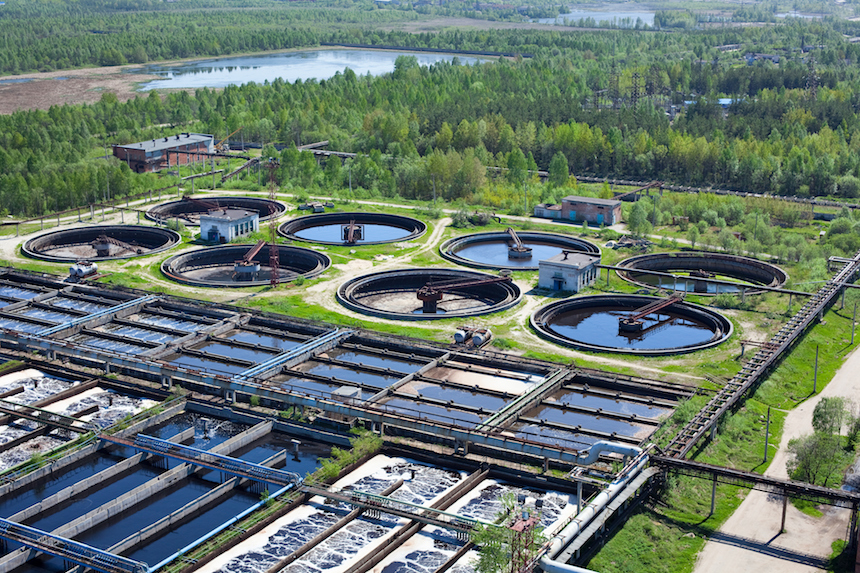
Public water quality has received a lot of attention in recent years as some disturbing discoveries have been made regarding lead levels in cities across the country. Now, a new study from the Johns Hopkins University pinpoints other chemicals in water that are worth paying attention to – and in fact, some of them may be created, ironically, during the water treatment process itself.
To rid water of compounds that are known to be toxic, water treatment plants now often use methods to oxidize them, turning them into other, presumably less harmful chemicals called “transformation products.” Though earlier studies have looked at the byproducts of water treatment processes like chlorination, not so much is known about the products formed during some of the newer processes, like oxidation with hydrogen peroxide and UV light, which are especially relevant in water reuse.
“Typically, we consider these transformation products to be less toxic, but our study shows that this might not always be the case,” says lead author Carsten Prasse, assistant professor in the Department of Environmental Health and Engineering at the Johns Hopkins Whiting School of Engineering and the university’s Bloomberg School of Public Health. “Our results highlight that this is only half of the story and that transformation products might play a very important part when we think about the quality of the treated water.”
Prasse, along with colleagues from the University of California, Berkeley, chose to look at phenols, a class of organic chemicals that are among the most common in the water supply, as they’re present in everything from dyes to personal care products to pharmaceuticals to pesticides as well as in chemicals that are naturally occurring in water.
To determine what compounds the phenols transform into during treatment, the team, whose results are published in Proceedings of the National Academy of Sciences, first oxidized phenols using peroxide radicals, a process often used by water treatment plants. Next, they borrowed a clever method from biomedicine: They added amino acids and proteins to the mix. Depending on what chemical reactions took place, Prasse and his team could do some backwards calculation to determine what compounds the phenols must have turned into in the earlier step.
They discovered that the phenols converted into products including 2-butene-1,4-dial, a compound that is known to have negative effects, including DNA damage, on human cells. Interestingly, furan, a toxic compound in cigarette smoke and car exhaust, is also converted into 2-butene-1,4-dial in the body, and it may be this conversion that’s responsible for its toxicity.
To test the specific effects of 2-butene-1,4-dial on biological processes more fully, the team exposed the compound to mouse liver proteins. They found that it affected 37 different protein targets, which are involved in a range of biological processes, from energy metabolism to protein and steroid synthesis.
One enzyme that 2-butene-1,4-dial was shown to bind is critical in apoptosis, or “cell suicide.” Inhibiting this compound in a living organism might lead to unchecked cell proliferation, or cancer growth. And other compounds that 2-butene-1,4-dial interferes with play key roles in metabolism. “There are a lot of potential health outcomes, like obesity and diabetes,” says Prasse. “There’s a known connection between pesticide exposure and obesity, and studies like ours may help to explain why this is.”
The results are exciting since this is the first time these methods have been applied to water treatment, Prasse says. In time, they may be expanded to screen for other types of compounds beyond phenols.
Water purification is extraordinarily challenging, since contaminants come from so many different sources–bacteria, plants, agriculture, wastewater–and it’s not always clear what’s being generated in the process. “We’re very good at developing methods to remove chemicals” says Prasse. “Once the chemical is gone, the job – it would seem – is done, but in fact we don’t always know what removal of the chemical means: does it turn into something else? is that transformation product harmful?”
Prasse and his team point out that by the year 2050, it’s been estimated two-thirds of the global population will live in areas that rely on drinking water that contains the runoff from farms and wastewater from cities and factories. So safe and effective purification methods will be even more critical in the coming years.
“The next steps are to investigate how this method can be applied to more complex samples and study other contaminants that are likely to result in the formation of similar reactive transformation products,” says Prasse. “Here we looked at phenols. But we use household products that contain some 80,000 different chemicals, and many of these end up in wastewater. We need to be able to screen for multiple chemicals at once. That’s the larger goal.”
